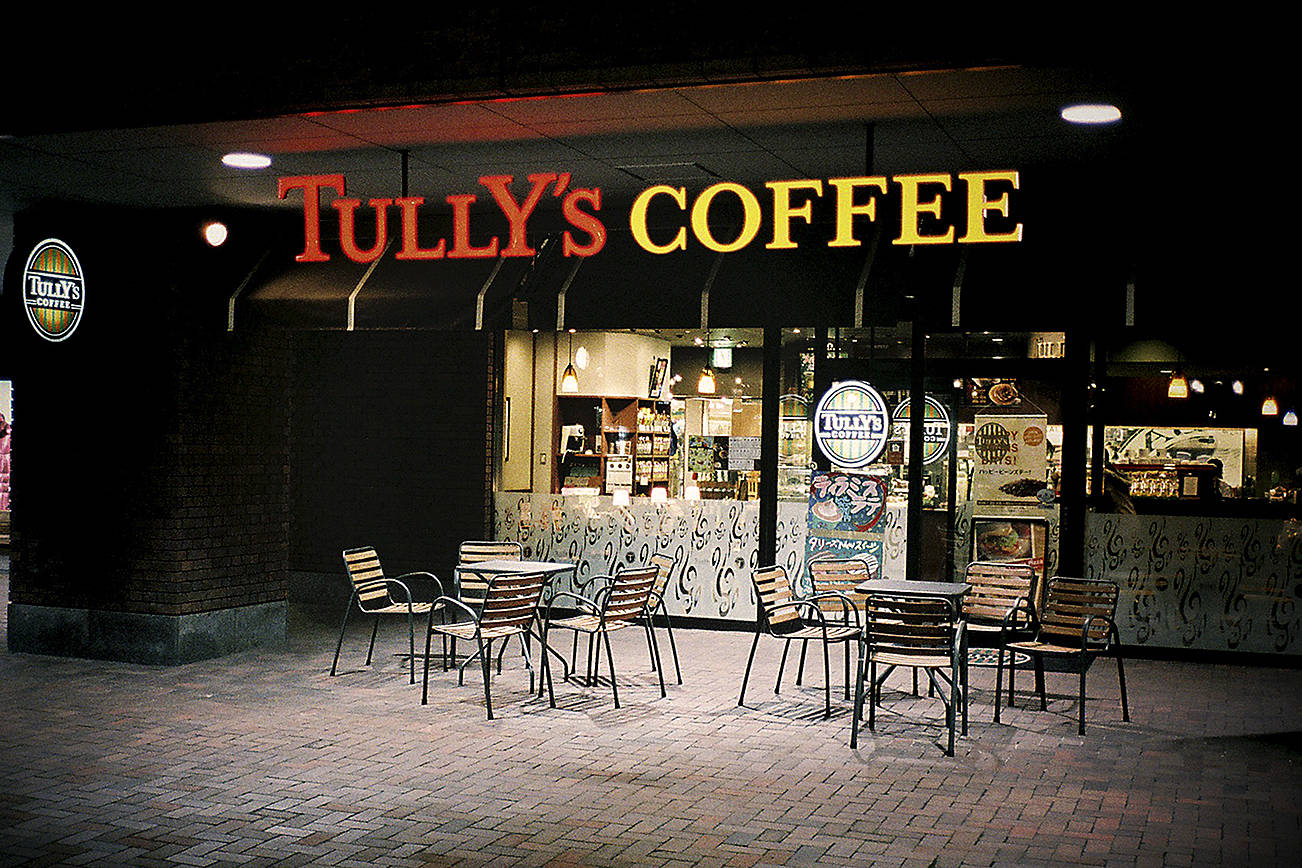After 35 years of putting off repairs to many of his 50-some Roosevelt-neighborhood properties while fending off dozens of civil actions with repetitious court appeals, Hugh Sisley may have finally reached the pinnacle of his reigning Seattle slumlordship.
The 86-year-old is facing a record $2 million fine that continues to increase at the rate of $1,600 a day, plus 12 percent interest. And now, after years of foot-dragging of its own, City Hall is finally moving to collect the debt. As officials launch a new initiative approved by the City Council to inspect every rental unit in town, City Attorney Pete Holmes is planning to recover what the stubborn rental king owes by confiscating prized Roosevelt properties held by the penny-pinching millionaire.
“We’re currently deciding how to go about collecting those judgments, and foreclosing on the property is likely the best way,” says John Schochet, Holmes’ deputy chief of staff. “We have to decide what’s best for the neighborhood. But of course, all he has to do is write us a check and that would be the end of it.”
That doesn’t appear likely—at least not for the foreseeable future. The $2 million Sisley owes resulted from a single court case involving just two of his Roosevelt rental homes, one of which has been torn down. The case—which began as two separate housing-code violation cases in 2008 and 2009, then was combined into one large civil prosecution—has already endured a half-dozen court hearings, including a jury trial, followed by appeals. And though all wound up in favor of the city, Sisley is once again appealing the outcome.
“That’s correct,” says Jeff Grant, the Seattle attorney representing Sisley and his wife Martha in the long-running legal challenge. “The fines at issue are on appeal, which we are going to be arguing sometime in January. So, so far he has not paid any fines or penalties, and that won’t change until there’s a final [court] decision.”
Grant thinks the city is awaiting the outcome of the latest appeal, but city officials indicate that since the judgment has been finalized repeatedly by the courts, it’s time for Sisley to pay up after nearly five years of legal wrangling. Code inspectors from the Department of Planning and Development found 42 violations at the two houses in question when they were operated as boarding homes in 2008 and 2009. Sisley charged up to a half-dozen renters $500 monthly each for a bedroom and shared bathroom/living facilities at the homes, which were cited for lack of heat, faulty wiring, broken toilets and windows, unsafe conditions, and insect infestation.
Rather than making quick repairs, Sisley fended off inspectors and took the issues to court, a tactic he has used to delay repairs and paying fines at many of his other rental homes. (The city has amassed close to 200 code-enforcement cases relating to Sisley properties dating to the 1980s, according to Holmes’ office. They include junk storage violations, emergency orders, and unfit vacant buildings subject to demolition; more than 25 of those cases required taking Sisley to court to force his compliance.)
The current case involving the two boarding homes (at 6317 15th Ave. N.E. and 6515 16th Ave. N.E.) ultimately led to onerous court judgments: $247,000 in fines, costs, and penalties at one home and $368,000 at the other, plus daily penalties for both properties. Sisley had claimed he corrected the violations, but refused to allow inspectors inside the homes to confirm the work, so the city has continued to add daily fines as allowed by law.
As the clock continued to run, Sisley challenged the size of the fines and penalties, claiming the city’s Municipal Court was bound by the same $75,000 judgment limit of District Courts. He lost that too. “The appellate court’s decision,” city attorney Holmes said at the time, “reinforces the city’s ability to make it more expensive to be a slumlord than to comply with the Seattle Municipal Code.”
His deputy Schochet says the total Sisley owes has ballooned to $2,100,645 as of last week. At the one home still standing, the continuing penalties click upward at $600 per day; in the house that was demolished, the penalties came to $1,000 a day for 1,034 days—the duration between the violation and the razing of the home in July 2012. The amount due also carries a 12 percent annual interest rate, Schochet says. Sisley’s attorney Grant confirms the amount due by his client as “$2 million and counting.”
Sisley, in a separate case, recently added more to his tab when a city judge ruled he had to pay $7,342 in tenant relocation fees, plus interest. He also faced an additional $180,000 in penalties, says his attorney, but, though no written ruling has been issued, the judge orally ruled against that penalty, Grant says.
“Hugh is very principled in much of what he does, and fights for what he believes,” Grant adds. “I know the city will never stop calling him a slumlord, and they have a long, contentious history. But he has generally responded to the citations and tried to deal with them. In some situations he pushed back.”
Grant describes his client as a frugal businessman. Tales of his scrimping are legendary. One resident recalls often seeing Sisley reading a newspaper at a local barbershop. The barber told the resident that Sisley was too cheap to spend 25 cents for a newspaper, so he came in and read the shop’s paper for free.
Sisley also earned a much less amiable reputation for hiring bouncers as rental managers. The most notorious was a swaggering neo-Nazi gun runner named Keith Gilbert, who managed Sisley’s Roosevelt properties and enforced rental policies. Gilbert once did federal prison time for conspiring to dynamite a stage where Martin Luther King Jr. was scheduled to speak. He was sent back to the lockup after a 2005 bust for possession of illegal weapons, including two machine guns. He expressed remorse only at being separated from his pet Blondi, a snarling German shepherd he named in memory of a dog owned by Adolf Hitler.
Gilbert regularly brought civil-rights lawsuits against city inspectors for “invading” Sisley’s properties; he also sued judges and once sued a Roosevelt neighborhood association when it attempted to create a commercial plan for the district. Sisley felt the rezoning plan would negatively affect his properties.
Today, such a rezoning is a reality, and Roosevelt is finally changing. Sound Transit has set up shop in the middle of the spoiling Sisley empire. Prep work is underway for tunneling and construction of the Roosevelt Station, part of the northern extension of Seattle’s light rail. Sound Transit says the station, to open in 2021, should have 8,000 daily boarders by 2030. That’s expected to have a booming impact on the nearby slumbering Roosevelt commercial district.
At the festering intersection of 65th Avenue Northeast and Northeast 15th Street, in the shadow of historic, restored Roosevelt High School, three of Sisley’s dilapidated properties sit in a row, drab gray and boarded-up remains of once fine homes fallen into great disrepair. They loom over the neighborhood as relics of good days gone sour, rotting monuments of the Sisley Rental Wars, circa 1980 to date.
For the most part, Sisley won those battles through delaying tactics. But change is coming to Roosevelt and elsewhere. Seattle rental-code enforcement should get tougher, or at least more emphatic, under a new city law that quietly went into effect January 1. Prompted by a need for more comprehensive and routine inspections instead of random renter complaints, the Rental Registration and Inspection Ordinance requires landlords to register all Seattle rental housing units from single-family houses to large apartment buildings. Starting in 2015, regular inspections will begin in an attempt to ensure units are safe and meet basic maintenance requirements.
Geoff Tallent, the city’s inspection program manager, says surveys show that an estimated 10 percent (about 14,800 units) of Seattle-area rental housing has moderate to severe physical problems. “This means there is potentially a lot of substandard housing with only a complaint-based system to address rental problems,” he says. The new Seattle program “expands this system by creating a way to address issues, even when tenants do not complain, and by increasing awareness of housing standards among property owners, managers, and renters.”
Rental properties will be selected randomly for inspection, Tallent says. Each property will be reviewed at least every 10 years, with roughly 6,000 to 7,000 units viewed annually. Inspectors will come from a pool of city and city-qualified private inspectors. “For a city inspector, the fee will be $130 for the property including the first unit, and $25 for each additional unit to be inspected,” says Tallent. “There will be no charge for follow-up inspections. Private inspectors will set their own rates. If the city gets half the inspection business, we estimate we will need approximately four additional inspectors on staff.”
Says City Council member Tim Burgess, “The new rental-inspection law is good as far as it goes, but a key issue we still have to wrestle with is how the city uses its enforcement powers in general, including land-use violations, housing safety, public health, and so on. We generally follow a complaint-based practice, so the rental-housing ordinance represents a first-step shift away from this approach, and that’s very good.”
It’s a step forward for rental rights, and indicative of market change. Even Hugh Sisley has sort of edged backwards into the future—he resisted rezoning 20 years ago, but now apparently sees it as a boost for his underused properties. The slumlord has now branched out as a leaselord, partnering with a developer who would like to turn Sisley properties—almost five acres’ worth—into shiny new retail and apartment buildings.
Thanks to light-rail expansion, Roosevelt Development Group, a partnership headed by developers Ed Hewson and Jon Breiner, now holds the leases to some of the more valuable Sisley properties in Roosevelt, and are working with Sisley, the city, and the neighborhood on how and what to build on them.
The City Council has already approved buildings of up to six stories near the high school and up to 10 stories in nearby zones. However, just as the slum houses were controversial, so are these new, taller buildings—500 residents showed up for one hearing on zoning changes to argue over visuals and density. Of concern to many are taller buildings that would block the handsome high school just off the intersection. Some were hoping Sisley might simply raze the half-dozen or so rotting structures on the small block and—considering the money he’s made in the neighborhood—donate the site to the school district, which could turn it into a grand park-like entryway for the high school.
There’s no indication that will happen. As then–City Councilman Richard Conlin said after the rezoning passed, “I am aware that there is an undercurrent of resentment because zoning changes will lead to Mr. Sisley making more money.”
There is also the question of which Sisley properties would be foreclosed if the city moves to collect its $2 million, possibly complicating Roosevelt development plans. As city attorney spokesperson Kimberly Mills says, they’re seeking a “win-win” deal that’s best for both the neighborhood and taxpayers. But what happens if it doesn’t seem like a win to Sisley, a litigant who loves the lethargy of the appeals process?
Either way, says Sisley’s attorney Grant, “Hugh Sisley as slumlord is just old news. What’s happening now is that progress is being made. A revitalization of that neighborhood is under way, with light rail and new, attractive residential buildings. That’s really the story of Hugh and the Roosevelt Neighborhood today. Progress.”
randerson@seattleweekly.com








